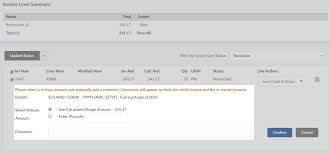How to Reissue an Invoice

Introduction:
In the world of business, invoicing plays a crucial role in maintaining accurate records, ensuring transparency, and providing a clear picture of financial transactions between companies or professionals. However, there may come a time when you need to reissue an invoice due to changes in the transaction details or errors. This article will guide you on how to reissue an invoice with ease.
Step 1: Assess the reason for reissuing the invoice
Before proceeding with reissuing an invoice, it’s vital to understand why you need to do so. There might be several reasons, such as incorrect billing information, change in scope of work, or updated client contact details. Knowing this will help determine the changes required on the revised invoice.
Step 2: Notify your client
As soon as you’ve realized there’s a need to reissue an invoice, inform your client about the required modifications and reason behind it. This keeps the communication lines open and sets their expectations for receiving a revised invoice.
Step 3: Draft a new invoice
Begin by drafting a new invoice that reflects the updated information. Update any errors or discrepancies identified in the original document with accurate data. Be sure to include all necessary details like payment terms, due dates, and itemized services or goods provided.
Step 4: Assign a new invoice number
When reissuing an invoice, assign it a new unique number. Doing so helps maintain organization in your record-keeping system and avoids confusion or duplication between the original and revised invoices.
Step 5: Add notes and explanations
Include additional notes or explanations on the reissued invoice regarding changes made from the original version. Clearly stating these adjustments offers clarity for your client and can help avoid any potential disputes that may arise from miscommunication.
Step 6: Send the revised invoice
Once all necessary revisions have been made on the new invoice, send it to your client using the agreed-upon delivery method. Ensure they receive and acknowledge the revised document to avoid any confusion during the payment process.
Step 7: Update your records
It’s important to keep accurate records of all financial transactions, including reissued invoices. Update your accounting system to reflect the changes made on the revised invoice and maintain an electronic or hard copy for future reference.
Conclusion:
Reissuing an invoice is a common occurrence in business dealings. By following the steps outlined above, you can ensure a smooth process while maintaining professional relationships with your clients and keeping accurate financial records for your business. Properly handling such situations demonstrates your commitment to transparency and customer satisfaction, fostering trust between all parties involved.






